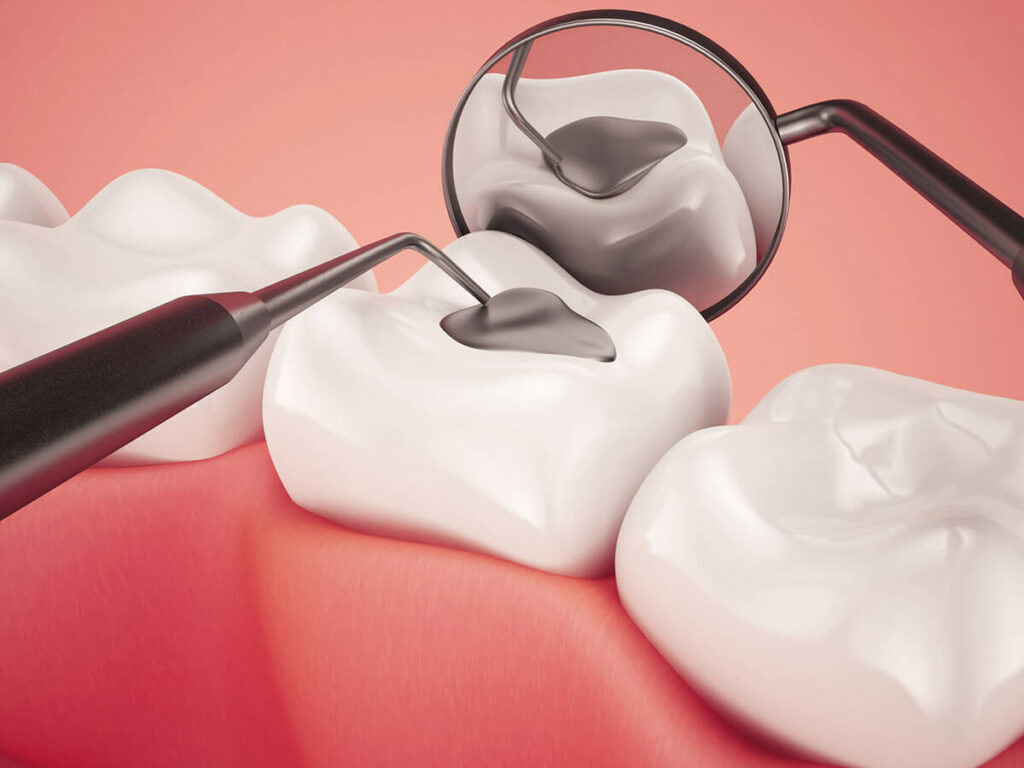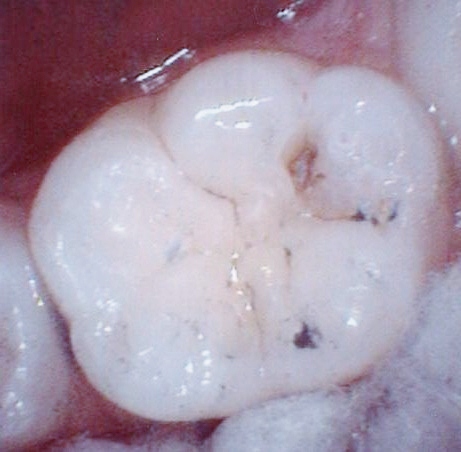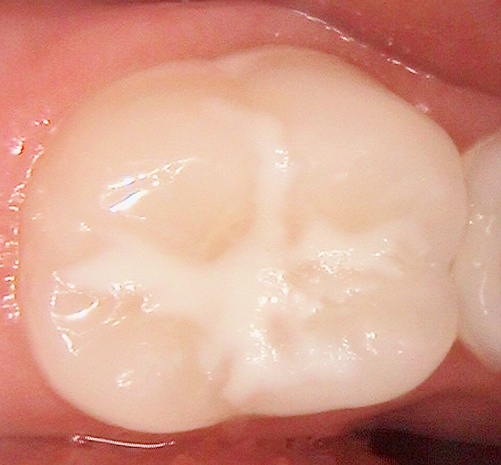Fillings and Sealants
Tooth decay and cavities are common dental issues. Receiving a tooth-colored filling to restore your tooth helps prevent the problem from developing into something worse.
Tooth Fillings and Sealants
Dental fillings are a common procedure used to restore mild decay or cavities. They have a high success rate and we offer two types – composite and amalgam fillings. The choice of filling material depends on your specific needs, but we typically use composite fillings as they look more natural and blend in with the color of your teeth, especially if they are visible.
Sealants are thin coatings that are applied to teeth to prevent cavities. They are a quick and affordable option to protect your teeth from decay and are usually used on children, but can also be used on adults.

Before

After

-
What are dental fillings?
Dental fillings are used to repair and restore damaged teeth caused by decay, cracks, fractures, or wear. When a tooth has a cavity, the decayed part is removed, and a filling material is used to fill the empty space. This process brings back the tooth’s original shape and function and stops further decay by sealing off any cracks or spaces where bacteria can enter.
There are different types of filling materials available, each with its own advantages and disadvantages:
– Amalgam (Silver) Fillings: These fillings are durable and resistant to wear, making them good for filling cavities in back teeth where chewing forces are greatest. They have a metallic color, which makes them more noticeable than other types of fillings, so they are not used in areas that are highly visible.
– Composite Resins (Tooth-Colored Fillings): These fillings match the color of your teeth and are more visually pleasing. They are ideal for use in front teeth or visible parts of teeth. Composite resins bond directly to the tooth, providing further support. However, they may not be as durable as amalgam fillings and may need replacing more frequently.
– Gold Fillings: These are the most expensive option, but they are also highly durable and can last more than 20 years, making them the best filling material for some people.
– Ceramic Fillings: These are tooth-colored and more resistant to staining than composite resin fillings. They are also quite durable but can be as expensive as gold fillings.
– Glass Ionomer: This type of filling is made from acrylic and a specific type of glass material. It releases fluoride, which can help protect the tooth from further decay. However, glass ionomer is less durable than other types of fillings and is more susceptible to wear and prone to fracture.
The choice of filling material depends on various factors, including the extent of the decay, the tooth’s location, the patient’s dental history, aesthetics, and budget. Your dentist will recommend the most appropriate material based on your specific needs.
-
How do cavity fillings work?
Cavities and tooth decay can cause holes in the tooth, which can spread and damage the tooth if left untreated. To prevent further damage, dentists clean away the decay inside the cavity using a drill. However, this doesn’t repair the damage that has already occurred, so a filling is necessary. The purpose of the filling is to replace the missing or destroyed part of the tooth caused by tooth decay. The dentist molds the filling to match the shape of the surrounding teeth, which restores the strength and integrity of the tooth while also preventing further decay.
-
What is a dental sealant?
Sealants can be a great tool to reduce the number of fillings needed in permanent teeth during crucial developmental stages. The chewing surface of molars contains deep grooves that can harbor bacteria and cause cavities. Though these crevices may appear narrow, they are wide enough for bacteria to hide and cause tooth decay.
By sealing the grooves of permanent molars at a young age, the risk of decay significantly decreases. This quick and painless procedure involves cleaning and conditioning the grooves before flowing a resin material into them. The resin is then sealed using a blue activating light to provide protection against cavities. In just a few minutes, the permanent molars become safeguarded against tooth decay.
-
Who qualifies for dental sealants?
Sealants are designed for healthy teeth that have yet to develop cavities. In most cases, they’re placed on permanent molars shortly after they come in (around the ages of 6 and 12, respectively). However, adults can choose to get sealants too. It may be that their childhood sealants came off or they’re starting to develop cavities in other teeth for the first time.
Investing in affordable dental sealants can help you prevent more extensive (and expensive) oral health treatments in the future.
-
How long does numbness last after dental filling?
The duration of numbness after a dental filling depends on several factors, including the type of local anesthesia used and the individual’s metabolism. Typically, the numbness from a dental anesthetic can last anywhere from 1 to 4 hours. Some anesthetics have a longer duration of action than others, which might be chosen for procedures expected to be more lengthy or uncomfortable.
Patients are advised to be cautious while the numbness persists to avoid accidentally biting their tongue, cheek, or lip. Drinking hot beverages should also be avoided during this period to prevent burns, as the numbness can impair the ability to gauge temperature correctly.
If numbness persists for significantly longer than the expected duration, it’s important to contact your dentist to ensure there are no underlying issues or complications from the procedure.
-
How long does a temporary dental filling last?
A temporary dental filling is designed to last for a short period, typically from a few weeks to a few months. The exact duration can vary based on the material used, the tooth’s location, the amount of pressure exerted on the filling through biting and chewing, and the individual’s oral hygiene practices. Temporary fillings are used in various situations, such as:
- Waiting for a permanent filling or crown to be made in a dental laboratory.
- Allowing a tooth’s nerve to “settle down” if the pulp became irritated during decay removal or when there is a question about the tooth’s vitality.
- Providing a temporary solution in emergency dental treatments.
- Serving as a placeholder while a multi-step dental procedure, such as root canal therapy, is being completed.
Because temporary fillings are not meant to last long, they are made from materials that are easier to remove than permanent fillings. It’s important to follow up with your dentist to have a temporary filling replaced with a permanent one within the recommended time frame to avoid complications such as decay under the temporary filling or the filling breaking down. If you notice signs of wear or if the filling falls out, contact your dentist promptly to avoid damage to the tooth or infection.
What are you waiting for?
At Maynard Family Dentists, we believe in providing the best dental care, at the most affordable prices. Make an appointment, see more about our office, or explore all of the dental services we provide, using the links below.

